Photo Quiz #4 Answer
By Jim Burns
A) Good photo, easy bird
Well, I think it's easier because, despite Jeff Bouton's cautionary remarks on using tail pattern and shape only as corroborative evidence, at least the tail is visible. This is a slender, long-tailed raptor with a light eye and dark, vertical ventral streaking. It's an immature accipiter.
The head appears small relative to body size, with the eye placed well back. The streaking is dense, thick, teardrop shaped, and extends uniformly downward as far as visible between the legs. Those legs appear long and thin relative to body size. And then there's that corroborating evidence from the tail -- notched and showing little or no white terminally.
This immature Sharp-shinned Hawk was photographed September, 1991, in Pescadero, CA. It was the first and only accipiter I have ever seen perched on wires.
B) Good photo, difficult bird
Well, I think it's more difficult because corroborative evidence from tail pattern and shape is not available to us. This is a slender raptor with a light eye and dark, vertical ventral streaking. It's another immature accipiter. It could almost pass for the same bird as in A), but...
The head appears "big, thick-necked, and bullish" relative to body size, with the eye placed well forward. The central breast streaking is not quite as dense, not quite as thick, not as strongly teardrop shaped, and seems to thin out, more than on the previous bird's, toward the flanks and belly. The biggest news to me from Jeff's article was "Coop's in early fall are very buffy through the breast." Even in this black & white rendition it is apparent this bird's breast streaking is overlaid on color which fades to white lower on the body. The color on the side is a nice, pronounced buff, something I had never consciously observed before. This immature Cooper's Hawk was photographed September, 1997 in Ramsey Canyon, AZ.
The Coop's legs, though mostly feathered and hidden here, will look much thicker than the "pencil" legs of the Sharpie, giving the former a shorter-legged appearance. The tail, if visible, would theoretically be somewhat rounded and show a definite and fairly broad white terminal band.
As Jeff and every other accipiter expert point out, most if not all these diagnostic features can be subtle. With a long study of a cooperatively perched bird, identification based on a preponderance of characteristics may be possible, but when the next accipter zips by overhead and your field companion quickly and casually labels it, be skeptical! Maybe some of you are a little skeptical of the identification of these two photo birds. That's good -- so am I.
C) Bad photo, easy bird
Let's see: three photos in the quiz; three North American accipiters. This raptor, then, mostly obscured by tree parts, should be a Northern Goshawk. What we can see well is vertical ventral streaking, the head appears large relative to body size, and the eye is placed well forward -- an immature Gos, and it is showing the characteristic whitish supercilium (eyebrows -- remember the term "supercilious" that you use to describe the power listers that treat the rest of us like novices), although young Coop's and Sharpies sometimes do too.
If you're still with me, shame on you! Dark eye? Not on a Gos! Dark tail with thin, light bands? Not on a Gos! Mustache mark? Not on a Gos! Something's amiss here, and it's not just the crummy photo. This is a small raptor or maybe those are giant leaves? Actually this was the last raptor I felt comfortable identifying. I would always see this raptor and go blank, especially a perched bird. Half an hour, sometimes half a day, later it would come to me -- too small for a Buteo, too small for a Prairie or Peregrine Falcon and lacking the former's heavy, obvious mustache, and the latter's "helmet," it usually seemed too small even for accipiters. What was left? This Merlin was photographed near Ocotillo development in Chandler, AZ, in December 1997.
Merlins are about the same size as Sharp-shinneds. Seen in flight the pointed falcon wings and the rowing falcon jizz are a giveaway, but on the perched bird look for the eye color, tail pattern, and head/body proportions. The first time I was finally able to identify a Merlin immediately, it happened to be shucking a Katydid. Sharpies may be small enough to perch on wires, but no self-respecting Sharpie would even turn its head for a Katydid.



